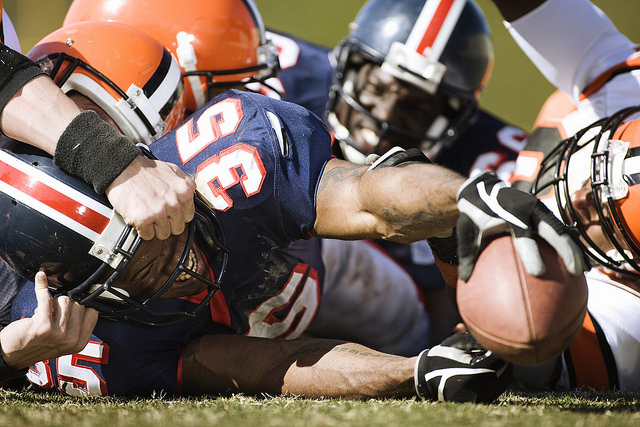Between Golden State’s Klay Thompson’s concussion during Game 5 of the Western Conference Finals and the gut wrenching head-to-head collision between Morgan Brian and Alexandra Popp during their Women’s World Cup match, concussions are once again at sport’s forefront.
These injuries serve as a reminder that it isn’t just the traditional warrior-esque sports facing protocol and safety revisions. While Brian’s injury proved to not be a concussion, similar incidents like the collision of Chelsea’s Oscar with Arsenal’s David Ospina earlier this season left fans with jarring reminders that player safety needs optimization in all sports.
While the soccer world is championing a revised substitution policy that protects players while leaving the game’s three substitution rule in place, several college football teams adopted a new measure to gauge the severity of blows to a player’s head that will take effect next season.
Wearable tech company i1 Biometrics will soon provide college football programs with its new real-time cranial data gathering technology. Programs signing on include Texas A&M and South Carolina. The technology is able to collect player’s impact data through wearable sensors that is then sent to a mobile device operated by team doctors. While i1’s doesn’t diagnose a concussion, the data indicates the severity and location of a player’s head injury.
In short, i1 believes that, “…our state-of-the-art mouthguard is transmitting real-time information, allowing real-time decisions about a players’ ability to continue on the field. It’s the first solution to be inside the player’s head to protect them from the inside out.”
Currently, i1’s sensors go into a player’s helmet or mouthguard. However, that will soon change when they soon roll out their product in headband form. Though slated for basketball players, this could prove useful to other sports like soccer. With all hope, real-time data like this will help sports that aren’t as impact-heavy to catch up the evolving landscape of their sport as well.


